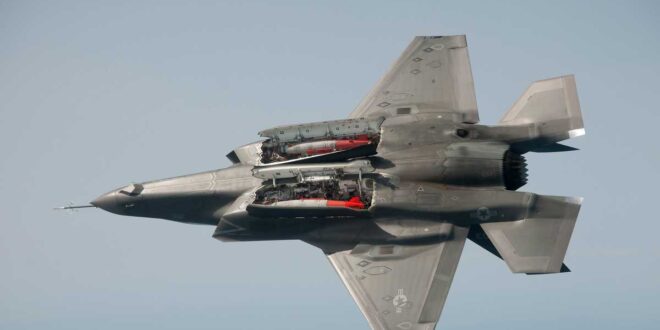On December 16th, 2022, the Japanese cabinet approved three crucial national security documents: 1) National Security Strategy, 2) National Defense Strategy, and 3) Defense Buildup Program. The documents collectively identify challenges and threats to Japan’s security and propose counteractive measures to be undertaken during the next five years, essentially marking a paradigm shift in Japan’s security policy and military posture.
The transformation: according to new policy documents, Japan would increase its defense spending to meet NATO’s standard of 2% of GDP by 2027 meanwhile spending a sum of $314 billion during the period on defense buildup. For the first time in decades, Japan would acquire long-range “counterstrike” capability to deter attacks besides pledging grand investments in developing cyber and space capabilities. To bolster counterstrike capability, Japan would acquire more F-35 aircraft capable of vertical landing and would invest in developing hypersonic weapons, Unmanned Aerial Vehicles (UAVs), and 6th generation fighter jets — last in collaboration with Britain and Italy.
From its humiliating defeat in World War II until the 1970s, Japan maintained a low military profile and relied on the USA’s security umbrella for its defense. During the 1970s, Soviet military buildup in the Pacific and the USA’s growing engagements elsewhere compelled Japan to increase its military spending and by the end of the Cold War, Japan has transformed itself into the “world’s foremost military powers”. The steady buildup of military capabilities continued through the unipolar era given the regional threats — especially those emanating from North Korea and to some extent China — did not subside in all respects.
Changing Japan’s security outlook via revising Article 9 of the Japanese constitution has long been a goal of the ruling Liberal Democratic Party, which considers Japan’s constitution as reminiscent of WWII defeat and subsequent occupation by the USA. Nevertheless, the memories of Japan’s militaristic past and its aftermath long haunted the Japanese public, which remained vociferously averse to any such emendation. Therefore, despite having a two-thirds majority at one time, Liberal Democratic Party under the late Shinzo Abe as prime minister fell short of introducing any changes to Japan’s constitution.
The Abe government, however, did reinterpret the constitution and initiated a makeover of Japan’s security posture during its eight years reign (2012-2020). As James Stavridis puts it, “Shinzo Abe’s real legacy is military, not economic”. In 2014, the Abe government authorized Japanese troops to act in aid of an under-attack ally. The same year, Abe relaxed the ban on the export of arms, however with the caveat that the exports would only be allowed if they “contributed to the global peace”.
In 2018, the Abe government created National Security Council, which significantly enhanced Prime Minister’s authority in security affairs. Besides making institutional and organizational changes, Abe’s era saw a steady increase in Japanese defense spending by leveraging the country’s economy, which remains third biggest in the world. Tokyo acquired cutting-edge weaponry including missile defense systems, new-generation radars capable of detecting targets at a long-range, and fifth-generation F-35 fighters, mostly from the USA.
The recent policy documents mark the culmination of Shinzo Abe’s nearly decade-long efforts and essentially purpose to transform Japanese security posture from pacifist to more assertive. Propitiously for the Liberal Democratic Party, in the wake of Russia’s invasion of Ukraine, public opinion in Japan has reportedly shifted in favor of changes in security policy.
On the top of the internal predisposition to get away with the memories of WWII humiliation, the external security environment of Japan is also undergoing unprecedented changes, which made the aforementioned modifications inevitable.
China — categorized as the “greatest strategic challenge” in the Japanese National Security Strategy — now wields the world’s largest navy by the number of vessels and is speedily expanding to its military footprint in the Western Pacific. Likewise, nuclear-armed North Korea — classified as a threat in the NSS — has grown in belligerence as well as the capabilities. The communist aloof country conducted the highest number of ballistic missile tests during 2022 — one of which flew over Japan last October. Moreover, Russia has recently added Japan to the list of unfriendly countries after Tokyo joined Western sanctions against Russia. Moscow is not only increasing its military presence in the Pacific but is carrying out joint naval drills and air patrols with Beijing evoking anxieties in Tokyo. It goes without saying that the security environment for Japan has become more challenging and complicated than 1970s.
Although the USA has been trying to reorient itself towards the primary theater of Great Power rivalry i.e. Western Pacific, the transformed European security environment owing to war in Ukraine would likely inhibit the Washington’s unqualified reorientation towards the Pacific. Moreover, despite Japan under Abe smartly weathered the Trump assault against the US allies, the eccentric real estate tycoon did galvanize Japanese leadership to be prepared for another isolationist inhabiting the Oval Office. Hence the intent to share more burden in the alliance besides taking an assertive role in the regional security matters.
In essence, Japan now seeks to assume primary responsibility for its security meanwhile enjoying the shelter of the USA’s security umbrella and extended deterrence. At the same time, Japan is exploring options beyond the alliance with USA by expanding military partnerships and collaboration with other likeminded countries. The project to develop 6th generation fighter jet in collaboration with Britain and Italy, and the recent military drills with India underscore Japan’s inclination to expand its military partnerships beyond Washington.
 Geostrategic Media Political Commentary, Analysis, Security, Defense
Geostrategic Media Political Commentary, Analysis, Security, Defense





